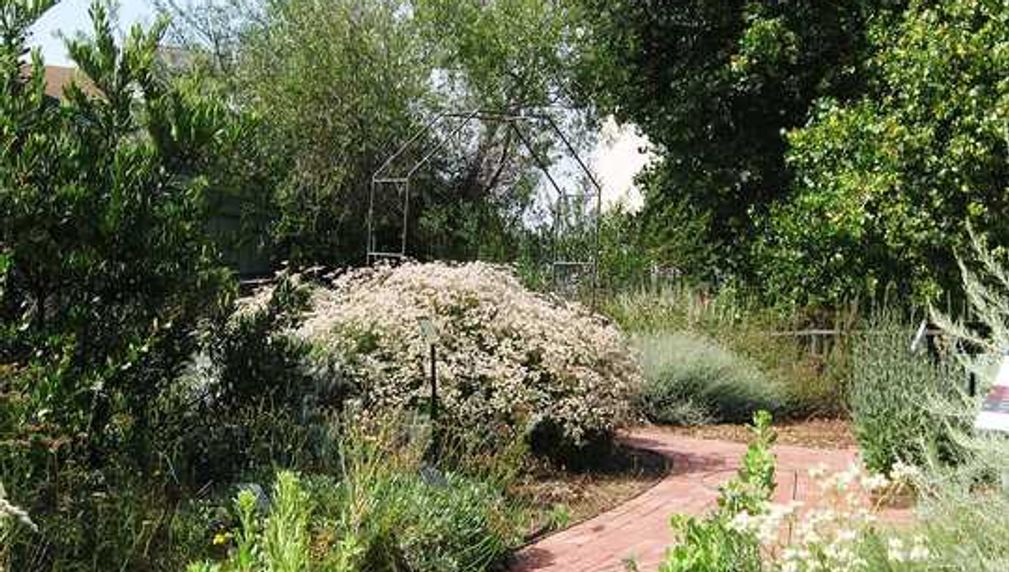Grow Local: Plant Native! Youth advocacy for sustainable landscapes at LA Public Housing
Grow Local: Plant Native! Theodore Payne Foundation, LA Housing Authority and Boys & Girls Clubs of the LA Harbor partner to reshape LA for a sustainable future, lush with native plants for all.

Are any other organizations collaborating on this proposal?
Housing Authority of the City of Los Angeles and Boys & Girls Clubs of the Los Angeles Harbor – POLA
Please describe your project proposal.
By bringing beautiful and sustainable native plant landscapes to Los Angeles public housing, Grow Local: Plant Native will engage residents and staff in making long-term decisions about the future of LA and their own lives. Public housing staff will design and install native plant gardens. Youth will be hired to learn about native plant horticulture and communications strategies in order to create a marketing campaign to shape their communities future.
Which of the LIVE metrics will your proposal impact?
Waterways
Exposure to air toxins
Local water
Resilient communities
Tree canopy cover
Walk/bike/transit score
In what areas of Los Angeles will you be directly working?
South Bay
Describe in greater detail how your proposal will make LA the best place to LIVE?
It all starts with water. In this fifth year of drought, the urgent need to save water is on everyone’s mind. From local utilities to state government, from brown lawns to dry fountains, it’s impossible to escape signs of the drought. Drought has brought urgency to the task of crafting a more sustainable Los Angeles, and is an exceptional opportunity to make LA more livable for all its residents, human and otherwise.
Grow Local: Plant Native extends our concerns beyond water conservation, to bring sustainable choices, practices, and landscapes to residents of all ages and the staff of LA public housing.
Theodore Payne Foundation and Housing Authority of the City of Los Angeles have been working together to pilot native plant gardens at four public housing sites throughout LA. The Foundation has trained the Authority’s landscape staff and some residents in basic native plant horticulture. Foundation staff is guiding crews through design, installation, establishment, and maintenance of new plantings at San Fernando Gardens in Pacoima, Imperial Courts in Watts, Estrada Courts in Boyle Heights, and Mar Vista Gardens in Del Rey.
With Grow Local: Plant Native, we seek to extend this project to Rancho San Pedro, and closely engage the Rancho San Pedro youth in shaping the future of their city.
Objective: Train staff and establish 20,000 square feet of native plant landscape
Training for public housing staff
* Site assessment, design, and layout
* Installation and establishment
* Maintenance
Native plant material
* 1,200 1G plants
* 16 boxed trees
Objective: engage a cadre of youth through three, ten-week sessions
Develop a deeper understanding of where they live
* Learn about native plant and urban ecology
* Visit nearby natural reserves on field trips
* Identify and report bird and insect colonization of native plant landscapes using iNaturalist.org
Shape their living environment
* Propagate native plants for extending gardens
* Develop garden designs
* Develop and launch social media campaign promoting native plant landscapes
Materials
* Sets up for plant propagation
* Tablets for social media campaign and accessing iNaturalist.org
* Camera for creating videos
It starts with water, but it doesn’t end there. Native plants protect the air, and ground and marine water resources because they require little or no fertilizers or pesticides. No aerial application of pesticides will impact residents and there will be no potential outgassing from artificial grass. Further, when compared to tuft grass, established native gardens use 80% less water yet these lush, habitat-rich environments include shade trees that invite people to go outside or take a walk. In the face of climate change and an uncertain economic outlook, converting turf to resilient native plant landscapes will allow public housing resources to be used on other priorities.
Please explain how you will define and measure success for your project.
Objective: Train Rancho San Pedro staff
• Success: attendance of all staff at 32 hours of hands-on training (192 hours of contact time)
• Success: final garden design produced by staff within one month
Objective: Establish 20,000 square feet of native plant landscape at Rancho San Pedro
• Success: installation of gardens by March 1
• Success: 80% plant survival rate by end of grant period
Objective: Engage youth at Rancho San Pedro
• Success: attendance 8 youth at 63 hours of programming (504 hours of contact time)
• Success: attendance 12 youth and 16 adults at four field trips (448 hours of contact time)
• Success: identification of 45 different species in native plant gardens
• Success: contribution of 45 species observations to iNaturalist.org
• Success: 40% improvement of knowledge of local ecology as demonstrated on pre- and post-tests
Objective: Increase public housing residents’ awareness in native plant landscapes
• Success: distribution of 1,200 4” plants to public housing residents, propagated by youth
• Success: # followers of social media campaign
• Success: observation of increased outdoor leisure-time activity by residents
How can the LA2050 community and other stakeholders help your proposal succeed?
Money
Volunteers
Staff
Publicity/awareness
Infrastructure (building/space/vehicles
Education/training
Technical infrastructure (computers
Community outreach
Network/relationship support